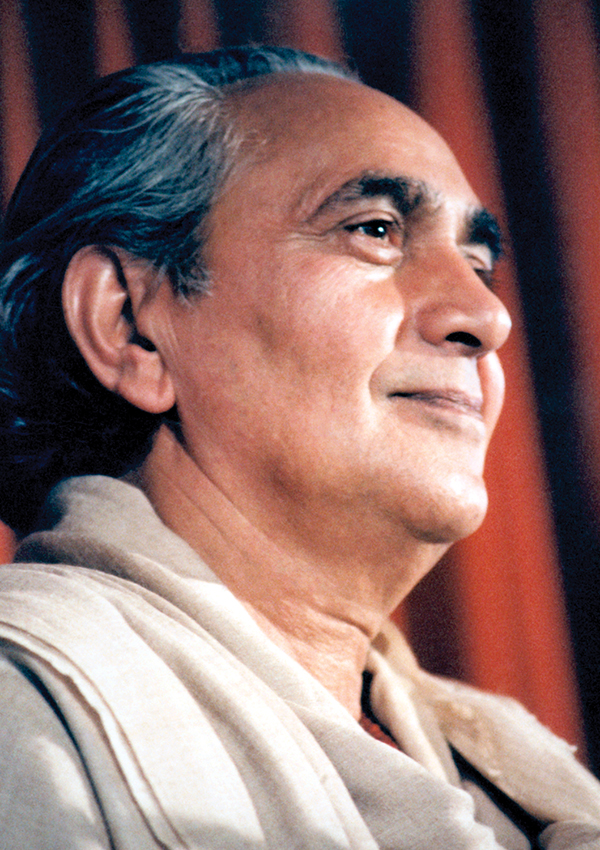The meaning of the word pranayama may be explained in two ways: prana is energy, or the life force, and yama means the control of that energy. Or the word pranayama may be split into prana and ayama: prana means “first unit of energy,” and ayama means expansion, or rising. Prana is the sum total of all energy that is manifest in man and in the universe. The science of breath is an important part of the science of pranayama.
Pranayama is the regulation of an otherwise irregular and hurried flow of air. It is the regulation of the three processes of exhalation (rechaka), suspension (kumbhaka), and inhalation (puraka), and a control of prana and the vital forces of the body. It is the practice of inhaling to one’s capacity, suspending the breath as long as possible, and exhaling until the lungs are as empty as possible, without using force or undue restraint.
Pranayama is one of the most important practices of all forms of yoga. It is a process for isolating the inner self from the influences of worldly thoughts, and a tool for understanding the finer forces functioning within the body. Its aim is to enable the yogi to gain control over the nervous system, including the autonomic nervous system, thereby gaining control over prana, or vital energy, and the mind. This is the real purpose of the practice.
There are many practices for the body and its superficial structure, but few practices involving the inside, or subtle, functioning of the body. One of the main purposes of pranayama is to purify the principal channels of energy (nadis) within the body, to direct the vital forces in and through these channels in the body, and to bring the mind under volitional control. These practices can reveal a side of life and nature that can be attained in no other way.
Whoever decides to practice pranayama must respect his body and make it his cooperator. He must consider his manner of living, the kind of food he eats, the atmosphere he breathes, this mental attitude, and all things combined. There is a saying, “He who fasts and he who eats too much; he who does not sleep and he who sleeps too much; he who works too much and he who does not work; none of these can be adepts.” A sadhaka (student) needs solitude; this is most important. The first essential, therefore, in the practice of pranayama is a place of retirement where one can, if possible, be alone with nature, unconditioned with the refinements of modern life. Yogis generally practice in a small chamber six feet square, with pure air, free form ornamentation, and free from every sort of noise. This is the most desired retreat. Otherwise, the retreat may be a quiet room, a cellar, an attic, the woods, or a canyon. It matters not, so long as it is a peaceful and quiet place. It should have clean air, a temperate climate, and easy access to food and water.
Traditionally, when a student is ready for higher yogic training, he practices in a cave in which conflicting surface conditions and noises are reduced to a minimum, and silence and peace are ever present. To an average person, however, accustomed as he is to a restless, noisy life, full of desires, such a retreat at the beginning would prove most dull and tiresome and would soon be given up. Therefore, one should temper his efforts a little in the beginning. For most practitioners, such an ideal situation for the practice of yoga can hardly be expected; so the most advantageous must be chosen. One should resolve to make some real progress with what is available. Time will solve future problems.
For a student who takes up the serious practice of pranayama and lives in a family situation, it is best to see people only when it is necessary, and spend as much time alone as possible. He must not allow the mind to dissipate its energies in vain or ideal conversation and thinking, nor mix in company, for such contact leads to attraction or repulsion, promotes jealousy, and arouses various sorts of hostile ideas, all of which will follow him into his retreat to disturb his mind. All speech must be that of a peacemaker. He must learn to be mindful and self-possessed.
The only limitation in any yoga practice is one’s strength—one’s physical capacity. In the beginning, one should measure his limitations carefully, not going beyond a very conservative reach, and hold to this at each practice period until it becomes comparatively easy. Then one may increase the practice by small stages.
It is preferable to practice in a lonely place, because many obstacles come in one’s way form time to time; it is here, in one’s soul, that one should search for real happiness, and not in the world. The student should learn to be a calm witness: seeing, feeling, and enjoying all; neither being absorbed in any one thing nor engrossed in another; keeping his sold free from all selfish anxieties of the world. No superstition must mislead him; negative conditions must be prevented from arising.
In view of maintaining efficient discipline, one should keep company with elderly men of learning, in whom alone discipline has its firm root. There is no harm in the beginning in congenial association, if this is restricted to a limited time; in fact, one will find it quite helpful and necessary at times. It is best to set a special time for social relationships and hold rigidly to this. Make one’s actions, in whatever line, definite and purposeful. Never allow “just killing time” to come into one’s field of action. If there is nothing at hand to be done, set about something else, be it only a stroll reflecting over some highlights of your reading and studies. Let the student conquer sorrow, grief, pain, and disappointment by contemplation, welcoming them as factors of resistance to give him increased energy and enabling him to reach his goal with greater speed.
. . . to be continued
Reprinted from Research Bulletin, Vol. 3, No. 2, 1981

